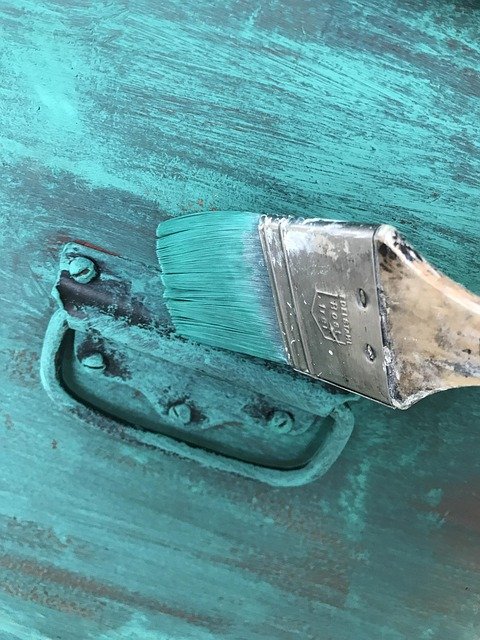Maker Marks and Labels: Decoding Manufacturer Signatures
Maker marks, labels, and inscriptions are practical fingerprints left by manufacturers and craftspeople. Decoding these signatures helps collectors, curators, and conservators trace provenance, assess authenticity, and plan appropriate conservation or restoration treatments. Understanding common mark types and where to look can streamline research, documentation, and safe shipping practices for fragile items.

Maker marks and labels carry a concentrated history: names, dates, workshop codes, or design numbers that help trace an object’s origin and life. For collectors, museum staff, and anyone involved in curation, reading these signatures supports provenance research and guides appraisal and valuation decisions. Marks can appear on ceramics, metalwork, furniture, textiles, and more; they may be stamped, painted, incised, or affixed as paper labels. Recognizing the format and context of a mark — for example, a potter’s impressed seal versus a retailer’s sticker — helps separate original manufacturer information from later additions or restorations, and it informs documentation and shipping protocols for fragile pieces.
How do marks establish provenance?
Maker marks are central to establishing provenance by linking an object to a specific maker, workshop, or period. A clear impressed or stamped mark with a recognizable name or symbol can be traced through cataloguing records, auction archives, or manufacturer catalogs, supporting research that situates an item within a production history. Paper labels and inventory inscriptions from previous owners or institutions add ownership layers that build provenance chains. Accurate documentation of marks, including photographs and written descriptions, strengthens provenance claims used in legal, curatorial, or appraisal contexts and assists conservators when evaluating previous interventions or materials.
Can marks inform appraisal and valuation?
Marks often materially affect appraisal and valuation by indicating rarity, origin, or association with a known maker. Authentication supported by consistent marks, corroborated by provenance and condition reports, typically contributes to higher valuation ranges compared to unattributed pieces. Appraisers examine marks alongside patina, construction methods, inscriptions, and documented provenance to form a valuation opinion. When cataloguing items for sale or insurance, clear records of maker marks and related documentation allow a more transparent appraisal process and provide buyers and institutions with evidence relevant to condition, restoration history, and market comparability.
What do marks mean for restoration and conservation?
Marks influence decisions about restoration and conservation because they can identify original materials, finishes, and maker-specific techniques. Conservators use documented maker marks to determine period-appropriate methods that respect the object’s integrity and historical context. For example, a printed label indicating lacquered finishes will shape cleaning approaches, while a sculptor’s incised mark might suggest original surface treatments to preserve patina. Detailed documentation of marks prior to any intervention is essential; it ensures that information isn’t lost during treatment and that any added labels or reports are recorded for future conservators and curators.
How does patina affect authenticity and forensics?
Patina — the surface changes from age and use — is a complementary clue to maker marks in authenticity assessments. Forensics and material analysis can distinguish intentional aging from recent alterations and can confirm whether a mark aligns physically and chemically with the presumed period. Microscopic examination, pigment or alloy testing, and imaging can reveal whether inscriptions were applied contemporaneously with manufacture or added later. Combining patina evaluation with mark analysis reduces false attributions and supports more reliable research and documentation for appraisal, conservation, and legal provenance claims.
How are inscriptions used in cataloguing and documentation?
Inscriptions and labels function as primary cataloguing data: maker names, production numbers, dates, and provenance notes are recorded verbatim in collection databases. Standardized documentation practices include photographing marks at multiple scales, transcribing inscriptions exactly as they appear, and attaching metadata such as position on the object and method of application. This thorough approach benefits curation and future research, making it easier to match items across archives, verify ownership during shipping, and compile condition reports before and after conservation or restoration. Proper cataloguing also aids insurance and valuation processes.
What role do marks play in curation, preservation, and shipping?
In museums and private collections, maker marks guide handling, storage, and display decisions because they signal material vulnerabilities and historical significance. Objects with fragile paper labels, applied decals, or delicate gilding identified by marks may require specialized packing or climate-controlled storage during shipping. Preservation strategies often reference maker-identified materials to select appropriate supports, adhesives, and mountings. Accurate documentation of marks ensures clear communication between curators, conservators, registrars, and shipping specialists so that handling preserves both physical and informational integrity of objects throughout loans or transfers.
Conclusion
Maker marks and labels are practical tools that connect an object to its maker, history, and appropriate care pathways. When decoded and documented carefully, these signatures support provenance research, inform appraisal and valuation, guide conservation and restoration choices, and shape curation and shipping practices. Systematic recording of marks and associated metadata preserves essential evidence for future research and contributes to responsible stewardship of cultural and material heritage.






